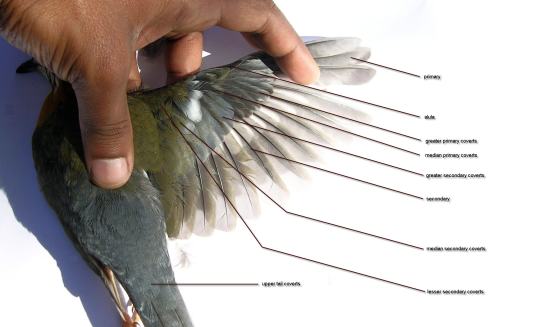The Woodpeckers, by Fannie Hardy Eckstorm – Updated
APPENDIX
Explanation of Terms.
Head of a Flicker.
*
Occipital means “on the occiput.”
a. Forehead; b. crown; c. occiput; d. nape; e. chin; f. throat; g. jaw-patch, or mustache.
Nuchal means “on the nape.”
Primaries are the nine or ten wing-quills borne upon the last joint of the wing.
Secondaries are the wing-quills attached to the fore-arm bones.
Tertiaries are the wing-quills springing from the upper arm bones.
Wing coverts are the shorter lines of feathers overlapping these long quills.
Tail coverts are the lengthened feathers that overlap the root of the tail both above and below, called respectively upper and under tail coverts.
Ear coverts are the feathers that over-lie the ear, often specially modified or colored.
Rump, the space between the middle of the back and the root of the tail.
♂ is the sign used to indicate the male sex.
♀ is the sign used to indicate the female sex.
A subspecies is a geographical race, modified in size, color, or proportions chiefly by the influence of climate. These variations are especially marked in non-migratory birds of wide distribution, subject, therefore, to climatic extremes. The Downy and the Hairy Woodpeckers, for example, are split up into numerous races. It should be remembered that when a species has been separated into races, or subspecies, all the subspecies are of equal rank, even though they are differently designated. The one originally discovered and first described bears the old Latin name which consisted of two words, while the new ones are designated by triple Latin names—the old binomial and a new name in addition. The binomial indicates the form first described. The forms designated by trinomials may be equally well known, abundant, and widely distributed. For example, among the woodpeckers, the northern form of the Hairy Woodpecker was first discovered and bears the name Dryobates villosus; but the first Downy Woodpecker described was a southern bird, and the northern form was not separated until a few years ago, so that the southern bird is the type, and the northern one bears the trinomial, Dryobates pubescens medianus.
North America, by the decision of the American Ornithologists’ Union, is held to include the continent north of the present boundary between Mexico and the United States, with Greenland, the peninsula of Lower California, and the islands adjacent naturally belonging to the same.
Lee’s Addition:
And there are also many other things that Jesus did, which if they were written one by one, I suppose that even the world itself could not contain the books that would be written. Amen. (John 21:25 NKJV)
Picidae – Woodpeckers Family



